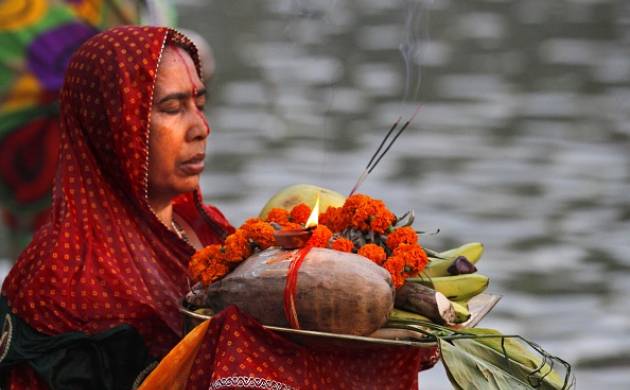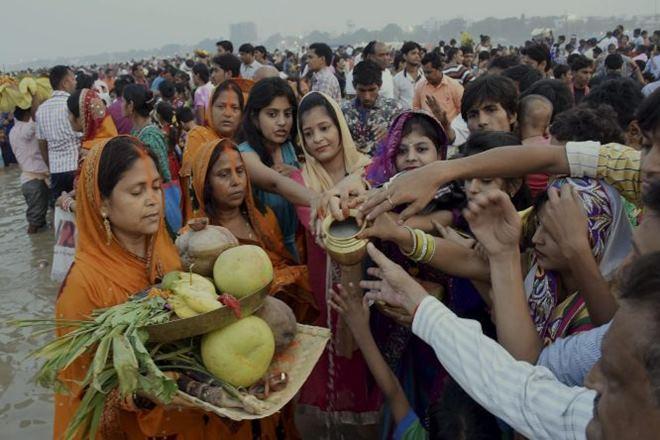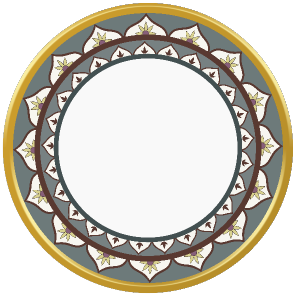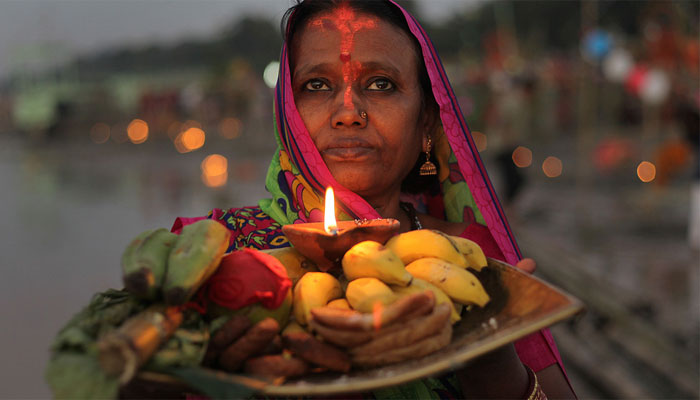All You Know About Chhath Puja
Whether they are away from their homeland or working outside the country, it's that time of the year when every Bihari tries to get back to the place where they belong. Yes! you guessed it right, its the sixth day after Diwali and the first day of the four-day Bihari festival —
Chhath Puja!
For Biharis, it isn't merely a festival but celebration of their life.
https://www.youtube.com/watch?v=w7bpsQ-OvGY
Worshipping the natural Phenomenon: Instead of idol worship, this festival observes worshipping the life force of the entire universe- The Sun. The worshippers clean the roads and decorate the ghats. Most parts of India, especially the states of Bihar and Uttar Pradesh celebrate this festival with grandeur.

Chhath Pooja- a festival that provides mental calmness by detoxifying body and mind
Most Difficult of all the festivals: Most women undergo fasts-without food and water for long durations during the span of four days.
Ritual of four days: Associated with the rituals, the worshippers do fasts spanning over for four days. People who do fasts are known as
"Vrati".
- First Day: ‘Nahan khan’ or ‘nahai khai’ is the first day of this festival. The worshippers take a dip in a waterbody, preferably, a river or a pond in the morning. They carry the same water home and make prasad for the Sun God. The worshippers have only one meal on this day.
- Second Day: Referred as ‘lohanda’, the second day observes women fasting for the whole day, ending it only after sunset. Another 36-hour tough fast begins. Worshippers refrain from food and water.
- Third Day: This day women prepare holy prasad. They take a holy dip in the water body during evening worshipping the Sun God and Chhathi Maiya. The women are accompanied by friends and relatives as they offer ‘sandhya arghya’ (evening offerings) to the setting sun. And others singing folk songs meant for the occasion.
- Fourth Day: The last day marks the end of the fast. Women break their fast with ginger and sweets. The worshippers gathered around the same water body in the morning and offering ‘Usha arghya’ (morning offerings) to the rising sun. The prasad is made from rice, wheat, fruits, coconut, jaggery, and butter. They do not use garlic, onion, and salt. Both Biharis and non-Biharis relishes enjoy the kheer and the thekua (cookie made of wheat flour) which is an integral part of the prasad. It is distributed among family and friends. This is the time when the family bonds celebrating the festival.

The festival symbolizes the celebration of the harvest season
The significance of Chhath Worship: Chhath Puja relates the worship of the Sun God. The festival believes to impart good health and prosperity. As we all follow Surya Namaskar (sun salutation) to prevent or get rid of many different forms of mental and physical illness, the Chhath Puja rituals also resonate with the same cause. Worshippers stand in the waters at dawn on the Sasthi of the Kartik month is believed to be scientifically designed to cure, or at least prevent many different diseases. It is also believed that following the Chhath processes helps in slowing down the aging process. Such beliefs and rituals of the
Chhath make it the most significant festival in the Hinduism.






 Chhath Pooja- a festival that provides mental calmness by detoxifying body and mind
Most Difficult of all the festivals: Most women undergo fasts-without food and water for long durations during the span of four days.
Ritual of four days: Associated with the rituals, the worshippers do fasts spanning over for four days. People who do fasts are known as "Vrati".
Chhath Pooja- a festival that provides mental calmness by detoxifying body and mind
Most Difficult of all the festivals: Most women undergo fasts-without food and water for long durations during the span of four days.
Ritual of four days: Associated with the rituals, the worshippers do fasts spanning over for four days. People who do fasts are known as "Vrati".
 The festival symbolizes the celebration of the harvest season
The significance of Chhath Worship: Chhath Puja relates the worship of the Sun God. The festival believes to impart good health and prosperity. As we all follow Surya Namaskar (sun salutation) to prevent or get rid of many different forms of mental and physical illness, the Chhath Puja rituals also resonate with the same cause. Worshippers stand in the waters at dawn on the Sasthi of the Kartik month is believed to be scientifically designed to cure, or at least prevent many different diseases. It is also believed that following the Chhath processes helps in slowing down the aging process. Such beliefs and rituals of the Chhath make it the most significant festival in the Hinduism.
The festival symbolizes the celebration of the harvest season
The significance of Chhath Worship: Chhath Puja relates the worship of the Sun God. The festival believes to impart good health and prosperity. As we all follow Surya Namaskar (sun salutation) to prevent or get rid of many different forms of mental and physical illness, the Chhath Puja rituals also resonate with the same cause. Worshippers stand in the waters at dawn on the Sasthi of the Kartik month is believed to be scientifically designed to cure, or at least prevent many different diseases. It is also believed that following the Chhath processes helps in slowing down the aging process. Such beliefs and rituals of the Chhath make it the most significant festival in the Hinduism.